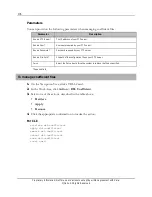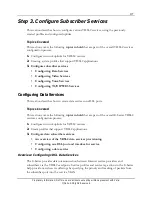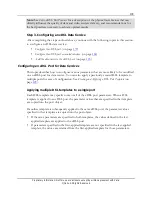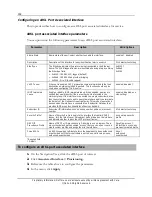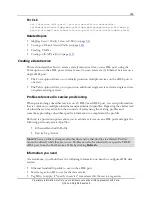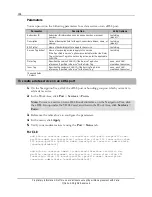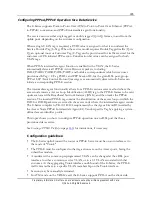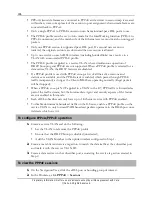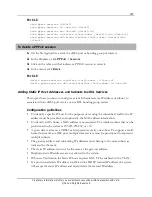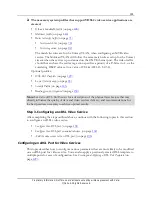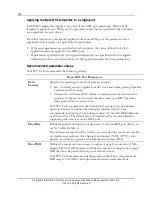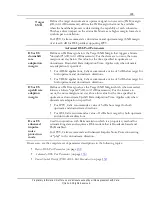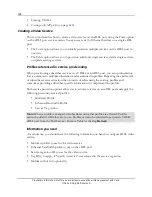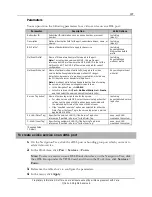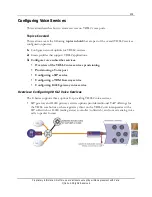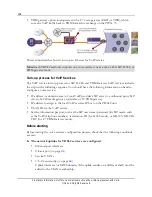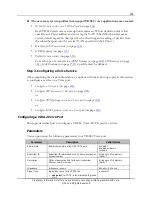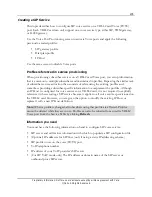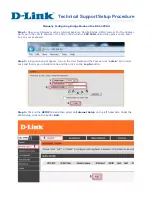
190
Proprietary Information: Not for use or disclosure except by written agreement with Calix.
© Calix. All Rights Reserved.
Topics Covered
This section covers the following
topics in bold
that are part of the overall VDSL2 services
configuration process:
1.
Configure network uplinks for VDSL2 services.
2.
Create profiles that support VDSL2 applications.
3.
Configure video subscriber services.
An overview of the VDSL2 video services provisioning
Configuring an xDSL port and interface for service
Configuring a video service
Overview: Configuring xDSL Video Services
The E-Series provides interconnection between video service providers and subscribers via
the VDSL2 card ports. Service profiles and service tag actions in the E-Series help provide
tiered service offerings by specifying the priority and marking of packets from the subscriber
port into the service VLAN.
The Calix E-Series supports the following data service models over IP on VDSL2 ports.
VLAN-per-Service:
where each service is assigned a dedicated VLAN where multiple
subscriber ports are assigned to the VLAN for a single service. This model is often
referred to as N:1.
VLAN-per-Port:
where each subscriber port is assigned a dedicated VLAN. This model
is often referred to as 1:1.
VLAN Stacking, Q-in-Q:
where a transparent LAN service on each port is configured
using VLAN double tagging.
Before starting
The port service provisioning options allow you to activate services on an xDSL port and
apply previously-created profiles. Before starting the video services configuration process,
ensure the following steps of the turn-up process have been completed:
1.
The network uplinks for VDSL2 services are configured.
Ethernet port interfaces
Ethernet ports
(on page
21
)
Service VLANs
VLAN memberships
(on page
64
)
Uplink interfaces (or ERPS domain, if the uplink resides on a different shelf) must be
added to the VLAN membership.

